
Unlocking the Power of Unconscious Processing and Pattern Recognition in the Context of Trauma
What does the Subcorticle Brain Have to do with Intuition?
The brainstem, often overshadowed by the more prominent prefrontal cortex, plays a crucial role in rapid, unconscious information processing. This processing forms the foundation for intuition and deep pattern recognition, abilities that can feel almost supernatural or spiritual in their accuracy and insight. Recent research has begun to uncover the complex relationship between the brainstem, intuition, and the impact of trauma on these processes. This paper explores the brainstem’s unique processing capabilities, the manifestation of intuition through unconscious pattern recognition, the connection to heightened awareness in schizophrenia and trauma, and the transformative potential of healing modalities that tap into this deep well of knowing.
The Brainstem: A Hub of Rapid, Unconscious Processing
The brainstem, while small in size compared to other brain regions, is a powerhouse of information processing. Research indicates that the brainstem can process information up to 100 times faster than the prefrontal cortex, allowing it to monitor and respond to a vast array of sensory and environmental cues without engaging conscious awareness (Eagleman, 2004). This rapid, unconscious processing enables the brainstem to detect subtle patterns and respond to potential threats or opportunities before they even register in our conscious mind. In this way, the brainstem serves as a kind of antenna, picking up on information that may feel uncanny or even supernatural in its accuracy and timing.
Intuition and Unconscious Pattern Recognition
Intuition, often described as a gut feeling or a sense of knowing without conscious reasoning, can be understood as the ability to tap into the wealth of information processed by the brainstem. Studies have identified specific biomarkers associated with heightened intuitive abilities, such as increased activity in the anterior cingulate cortex and basal ganglia (Lieberman, 2000). These regions are involved in unconscious pattern recognition and decision-making, allowing individuals with strong intuitive capacities to make rapid, accurate judgments based on subtle cues and associations.
In gambling, for example, successful players often exhibit physiological responses, such as changes in heart rate and skin conductance, that precede their conscious awareness of advantageous betting opportunities (Mossbridge et al., 2012). This suggests that their brains are processing and acting upon unconscious patterns and probabilities that others may overlook. The brainstem’s ability to detect these subtle regularities and associations forms the basis of intuitive insight and decision-making.
The Indirect Pathway, Schizophrenia, and Heightened Awareness
The relationship between heightened sensory awareness, unconscious processing, and mental health conditions such as schizophrenia has long been a subject of fascination and inquiry. According to the sensory gating theory, individuals with schizophrenia may have a dysfunction in the indirect pathway, a neural circuit responsible for filtering out irrelevant sensory information (Swerdlow & Light, 2018). This dysfunction can lead to an increased awareness of typically unconscious bodily processes, such as heartbeat and digestion, which can be overwhelming and distressing for those experiencing psychosis.
However, this heightened sensitivity may also grant access to a realm of unconscious metaphors, symbols, and intuitive insights that are ordinarily filtered out by the brain’s gating mechanisms. Some individuals with a genetic predisposition towards schizophrenia or related conditions may exhibit enhanced intuitive abilities and pattern recognition without the full-blown symptoms of psychosis. This suggests that the relationship between schizophrenia, intuition, and the indirect pathway is complex and multifaceted, with both potential risks and benefits depending on an individual’s ability to integrate and make sense of their unique perceptual experiences.
Trauma, PTSD, and the Awakening of Intuitive Capacities
Trauma, like schizophrenia, has been found to have a significant impact on the brain’s sensory gating and processing of emotional and somatic information. Individuals with post-traumatic stress disorder (PTSD) often experience a flooding of conscious awareness with traumatic memories, emotions, and sensations, as the brain’s filtering mechanisms are overwhelmed by the intensity of these experiences (Clancy et al., 2017). This can be profoundly destabilizing and dysregulating for those with unresolved trauma, leading to a chronic state of hyperarousal and reactivity.
Yet, many wisdom traditions have long recognized that experiences of suffering and adversity can serve as gateways to profound insight and transformation. The very same sensitivity that makes trauma so overwhelming may also attune individuals to subtle realms of intuitive knowing and understanding. The challenge lies in integrating and making meaning of these experiences, rather than being consumed by them.
Traditional cognitive and behavioral therapies, which focus on changing thoughts and behaviors at the surface level, may fall short in fully addressing the somatic and emotional impact of trauma. Healing modalities that work directly with the body, the unconscious, and the intuitive capacities of the brain may be necessary to fully process and transform traumatic experiences.
Healing Modalities for Trauma and Intuitive Development
A range of therapeutic approaches and practices have emerged to support trauma healing and the cultivation of intuitive abilities. These modalities work with the brain, the body, and the unconscious mind to release trapped energies, process unresolved emotions, and restore a sense of wholeness and connection.
Brain-based therapies such as brainspotting and neurofeedback use targeted interventions to reshape neural pathways and promote self-regulation. Brainspotting, developed by David Grand, uses focused gaze and mindfulness to access and process traumatic memories stored in the subcortical brain (Grand, 2013). QEEG brain mapping and neurofeedback training help individuals develop greater awareness and control over their brain states, learning to shift from patterns of traumatic hyperarousal to more integrated and coherent functioning (Vasquez, 2021).
Somatic and embodied therapies, such as Somatic Experiencing and Sensorimotor Psychotherapy, work directly with the body to release stuck traumatic energies and restore a sense of safety and groundedness. By tuning into physical sensations and impulses, these approaches help individuals develop a new relationship with their bodily experiences, one characterized by curiosity, acceptance, and trust (Ogden & Fisher, 2015).
Parts-based and depth-oriented therapies, such as Internal Family Systems (IFS) and Voice Dialogue, work with the different subpersonalities or aspects of the self to integrate traumatic experiences and access inner wisdom. These approaches recognize that trauma often results in a fragmentation of the psyche, with wounded parts carrying the burden of painful emotions and memories. By engaging with these parts with compassion and curiosity, individuals can begin to heal the rifts within themselves and access the intuitive guidance of their core essence or Self (Schwartz, 2001).
Finally, spiritual and contemplative practices, such as meditation, yoga, and shamanic healing, offer pathways to expand consciousness and tap into transpersonal sources of wisdom and guidance. These practices help individuals cultivate present-moment awareness, emotional regulation, and a sense of connection to something greater than themselves. By creating space for stillness and introspection, these practices allow the intuitive wisdom of the body and the unconscious to emerge.
Future Directions and Implications
As research continues to uncover the complex relationship between the brainstem, trauma, and intuitive capacities, new avenues for healing and growth are likely to emerge. Further studies into the neurobiological mechanisms underlying unconscious processing and pattern recognition may help to refine and target interventions for trauma recovery and intuitive development.
The integration of trauma-informed approaches with practices aimed at cultivating intuitive abilities also holds promise for a range of fields, from psychotherapy to business to creative pursuits. By tapping into the wisdom of the unconscious and the intelligence of the body, individuals and organizations may be able to access new levels of insight, innovation, and adaptability.
At a societal level, recognizing the transformative potential of integrating trauma healing and intuitive development may also support a shift towards greater compassion, empathy, and understanding. By honoring the depth and complexity of human experience, and the innate wisdom that lies within even the most wounded parts of ourselves, we may foster a culture of greater resilience, creativity, and connection.
The brainstem, far from being a primitive or unconscious part of the brain, is a highly sophisticated processing center that forms the foundation of our intuitive capacities. Its ability to rapidly detect patterns, associations, and environmental cues gives rise to the seemingly uncanny or supernatural qualities of intuition, which can feel like tapping into a realm of knowing beyond the ordinary senses.
Trauma and mental health conditions such as schizophrenia can have a profound impact on these intuitive capacities, amplifying sensitivity to unconscious information while also overwhelming the brain’s filtering mechanisms. Yet, within the destabilizing and often distressing effects of trauma also lies the potential for transformation and awakening.
By engaging with healing modalities that work directly with the brain, the body, and the unconscious mind, individuals can begin to release the stuck energies of trauma and access the wisdom that lies beneath. Somatic therapies, parts-based approaches, and contemplative practices offer pathways to integrate the shattered fragments of the self and restore a sense of wholeness and connection.
As we continue to explore the frontiers of human consciousness and the potential for growth and transformation, the brainstem and its intuitive capacities offer a powerful reminder of the depths of wisdom that lie within us. By honoring the full spectrum of our experiences, and the intelligence of our unconscious minds, we open ourselves to new possibilities for healing, creativity, and connection. In this way, the wounds of trauma can become portals to a deeper understanding of ourselves and the world around us, guiding us towards a more intuitive and integrated way of being.
References:
Clancy, K., Ding, M., Bernat, E., Schmidt, N. B., & Li, W. (2017). Restless ‘rest’: Intrinsic sensory hyperactivity and disinhibition in post-traumatic stress disorder. Brain, 140(7), 2041–2050. https://doi.org/10.1093/brain/awx116
Eagleman, D. M. (2004). The where and when of intention. Science, 303(5661), 1144–1146. https://doi.org/10.1126/science.1095331
Grand, D. (2013). Brainspotting: The revolutionary new therapy for rapid and effective change. Sounds True.
Lieberman, M. D. (2000). Intuition: A social cognitive neuroscience approach. Psychological Bulletin, 126(1), 109–137. https://doi.org/10.1037/0033-2909.126.1.109
Mossbridge, J., Tressoldi, P., & Utts, J. (2012). Predictive physiological anticipation preceding seemingly unpredictable stimuli: A meta-analysis. Frontiers in Psychology, 3. https://doi.org/10.3389/fpsyg.2012.00390
Ogden, P., & Fisher, J. (2015). Sensorimotor psychotherapy: Interventions for trauma and attachment. W. W. Norton & Company.
Schwartz, R. C. (2001). Introduction to the Internal Family Systems Model. Trailheads Publications.
Swerdlow, N. R., & Light, G. A. (2018). Sensory gating deficits in schizophrenia: Advancing our understanding of the phenotype, its neural circuitry, and genetic substrates. Schizophrenia Research, 198, 1–3. https://doi.org/10.1016/j.schres.2018.02.042
van der Kolk, B. A. (2014). The body keeps the score: Brain, mind, and body in the healing of trauma. Viking.
Vasquez, S. (2021). Emotional transformation therapy: An interactive ecological psychotherapy. Routledge.


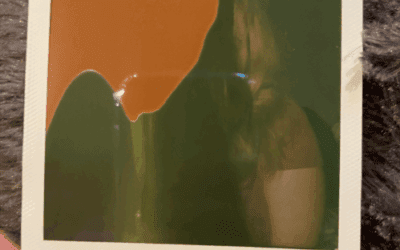




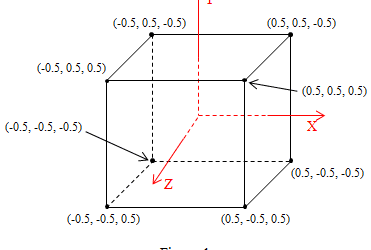


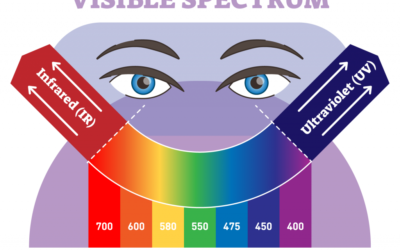




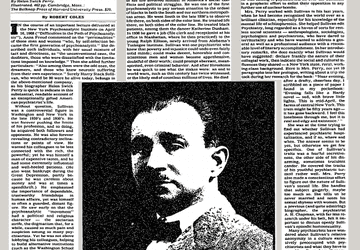

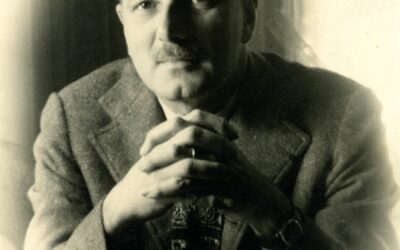







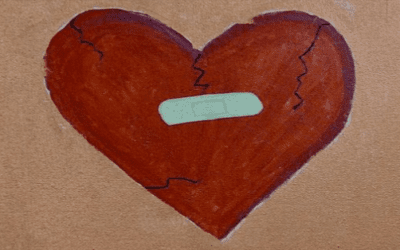
0 Comments